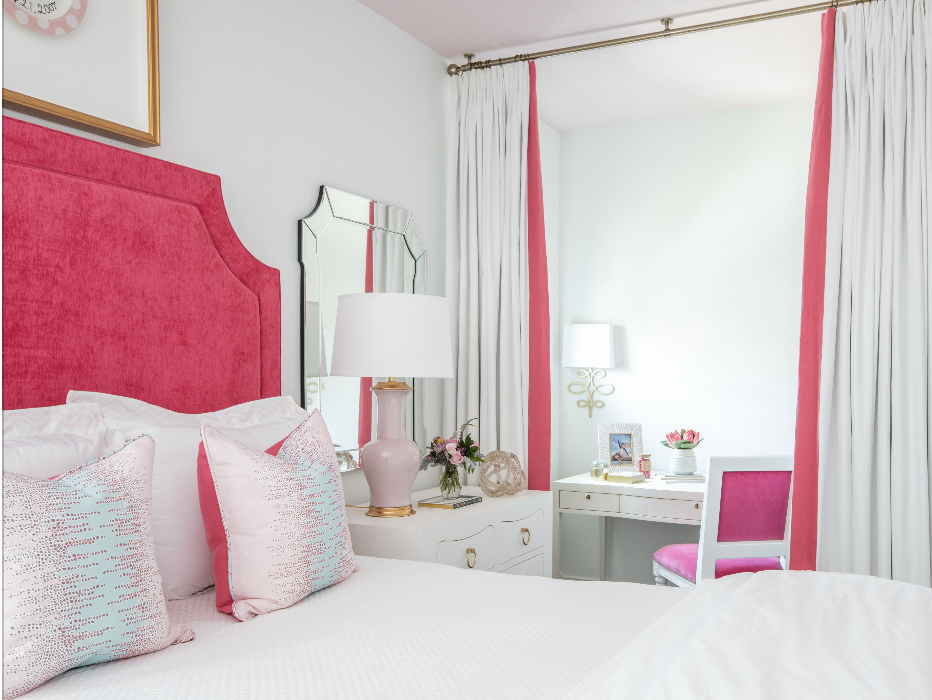Photo credit: Jessie Preza
It has been just over a year since designer Rachel Cannon has been preaching the need for homes to have a quiet room and to nix open floor plans. Little did she know 2020 would amplify the need for quiet rooms and finally make even the most fervent lovers of open floor plans to reconsider.
Originally designated as a place to recharge at the end of each day, the idea of a quiet room has got us questioning, why did we fall out of love with floor plans with walls in the first place and what has that done to our culture?
Below are 3 key reasons why homeowners should reconsider their open floor plan and add a quiet room:
Open Floor Plans Cannibalize Storage and Organization Opportunities
Vast expanses of square footage that could be utilized as bedroom storage, or a decent sized laundry room, are sacrificed for the sake of useless open space where the only action it sees is foot traffic. There’s an inevitable tendency for the kids’ toys, laundry, backpacks, shoes, and other items to pile up in the open space, which is also shared for dinner, movie night, and company. And people wonder why their homes never seem to feel neat and tidy?
Boundaries are a Necessity
Our culture of open floor plans has relegated personal space to the bedroom, our closets, or in some cases, the bathroom/tub! We feel guilty for saying we need alone time, so we hide out or come up with a reason to be alone: “I’m gonna go soak in the tub.” Some of our clients seek personal space by leaving home altogether and going to the gym. And in unfortunate cases, those people are resented the most by their families…because, why would you choose to spend time doing anything other than sitting in your open floor plan with every member of your family while the laundry piles up on the sofa, your toddler rides a Big Wheels across the floor in pursuit of the goldendoodle and Star Wars plays at volume level 60 in surround sound?
100% Together 100% of the Time is Unhealthy
It’s madness, the chaos families live in day to day as a result of open floor plans. We should not feel guilty for wanting to be alone. We should not feel ashamed to need some personal space. We should not have to suppress our feelings when the cacophony of an open floor plan grates on our nerves day in and day out. We should not feel lazy when what we want is to sit in a completely silent room and do nothing at all. 100% together 100% of the time is unhealthy. I’m sure there are psychologists much more qualified than I who can speak on the importance of independent play for kids, and the need for them to use their imaginations, rather than hours of screen time. But maybe we don’t need advanced degrees to know that at all. What we need is to normalize the idea that for at least 50% of the population (and I suspect even more now), solitude is a welcome break, and most of us would prefer to have it every day.
What about learning or office space?
The need for a quiet room has been amplified during the pandemic as well. Do you need a solution for creating a learning space for your child? Or maybe even an office space for you? If you are stuck in an open floor plan, there are a few fun things you can do to create these alternate spaces; spaces that allow for focus and eliminate distractions. In the bedroom photo above, Rachel partitioned the room to carve out a private homework and study nook.
Some other things to consider:
- Be selective about what you bring into this room. Clutter is not quiet.
- You don’t have to build an addition to your home, look for low traffic areas to carve out space for a quiet room (or in this case a homework station).
Rachel Cannon is an interior designer, business coach and podcast host from Baton Rouge, Louisiana. As owner and principal designer of Rachel Cannon Limited, Rachel helps extroverts and introverts peacefully coexist at home, with clients ranging from Palm Springs to Palm Beach. She was named a 2020 New Trad interior designer by Traditional Home magazine and her work has been featured in the Wall Street Journal, HGTV Magazine, Southern Home, RealSimple.com and more.



















